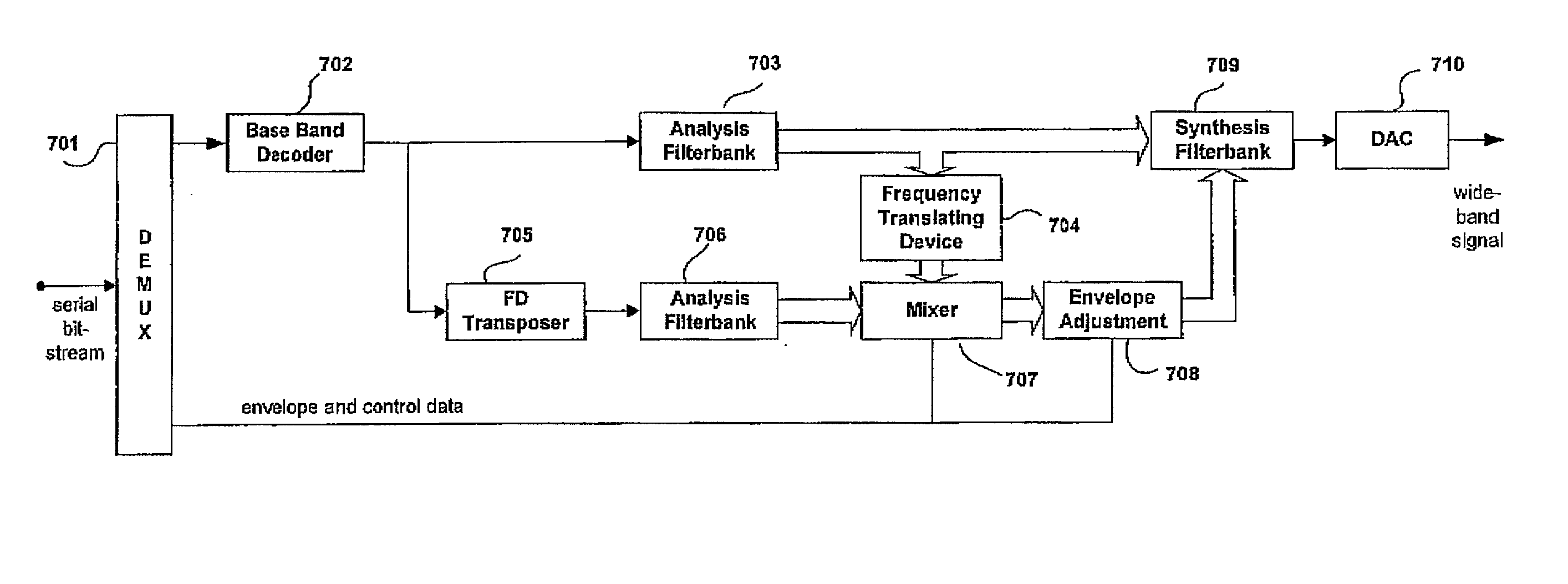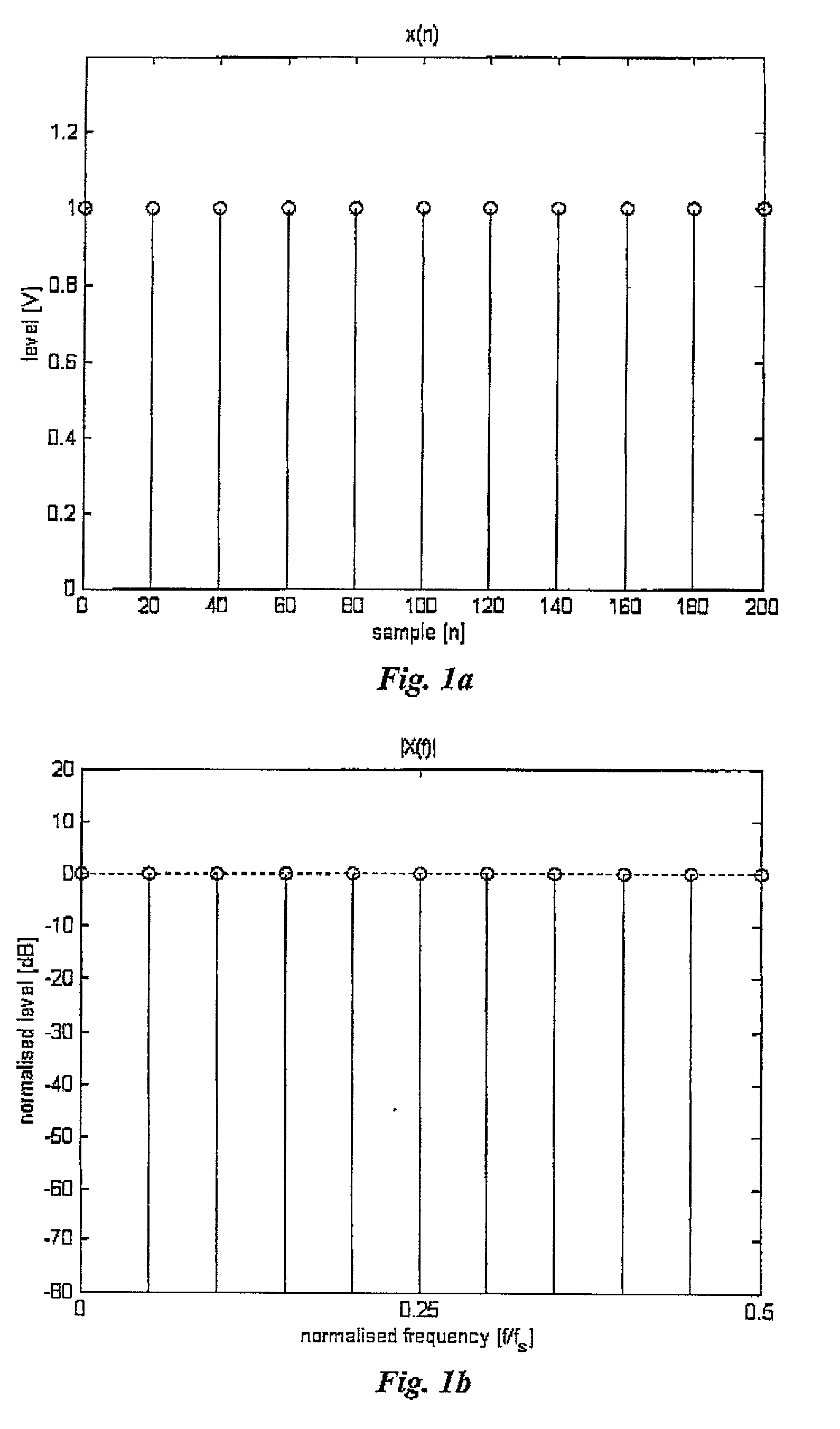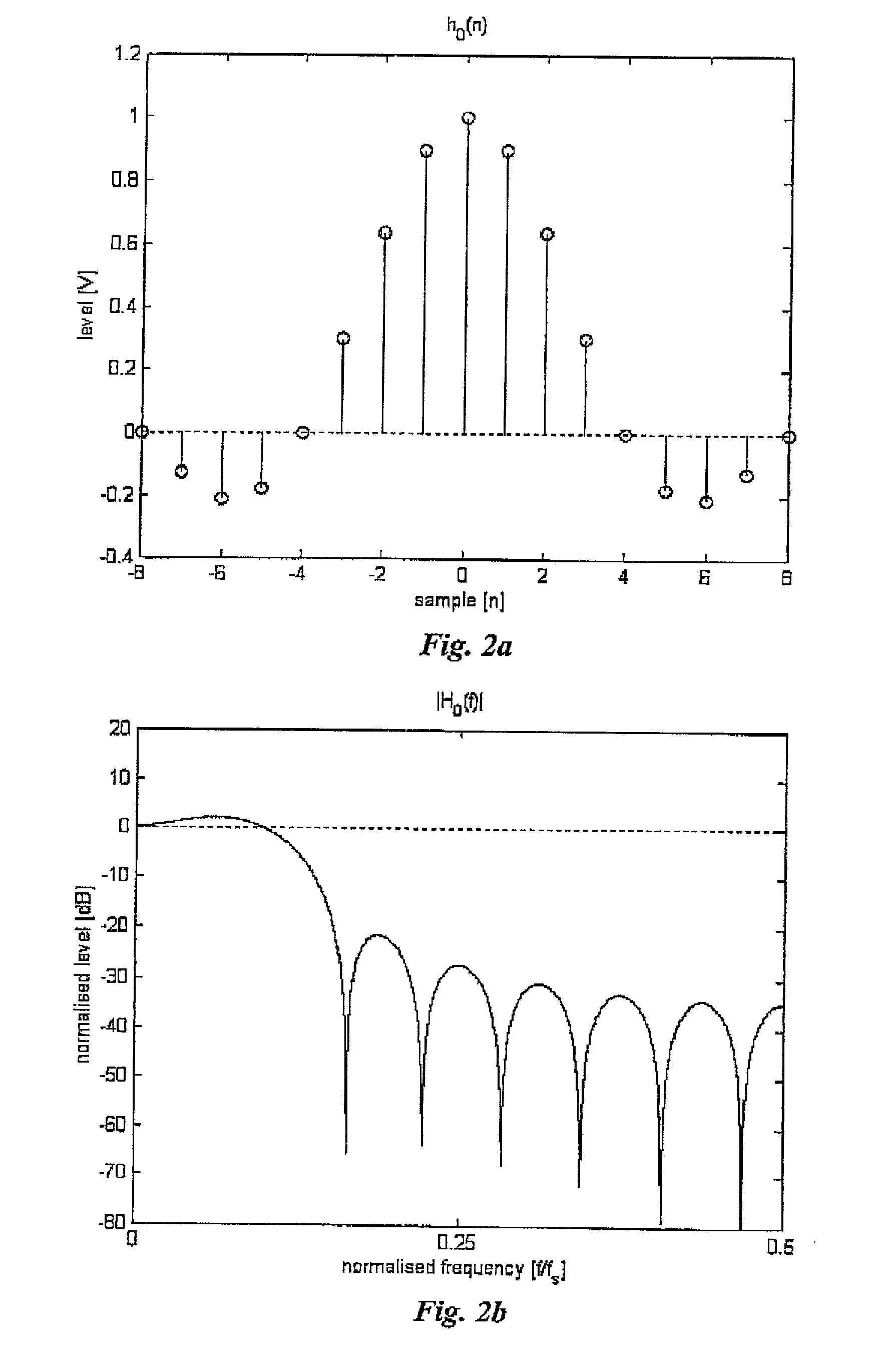Enhancing source coding systems by adaptive transposition
- Summary
- Abstract
- Description
- Claims
- Application Information
AI Technical Summary
Benefits of technology
Problems solved by technology
Method used
Image
Examples
Embodiment Construction
[0026] The below-described embodiments are merely illustrative for the principles of the present invention for adaptive transposer switching for HER systems. It is understood that modifications and variations of the arrangements and the details described herein will be apparent to others skilled in the art. It is the intent therefore, to be limited only by the scope of the impending patent claims and not by the specific details presented by way of description and explanation of the embodiments herein.
[0027] "Ideal transposition" of a single pitched pulse-train-like signal can be defied by means of a simple model. Let the original signal be a sum of diracs .delta.(n), separated by m samples, i.e. a pulse-train 1 x ( n ) = l = - .infin. .infin. ( n - l m ) ( Eq . 1 )
[0028] FIG. 1a shows x(n), and FIG. 1b the corresponding magnitude spectrum .vertline.X(f).vertline.. Clearly .vertline.X(f).vertline. corresponds to a of a Fourier series with fundamental f.sub.s / m, where f.sub.s is the s...
PUM
 Login to View More
Login to View More Abstract
Description
Claims
Application Information
 Login to View More
Login to View More - R&D
- Intellectual Property
- Life Sciences
- Materials
- Tech Scout
- Unparalleled Data Quality
- Higher Quality Content
- 60% Fewer Hallucinations
Browse by: Latest US Patents, China's latest patents, Technical Efficacy Thesaurus, Application Domain, Technology Topic, Popular Technical Reports.
© 2025 PatSnap. All rights reserved.Legal|Privacy policy|Modern Slavery Act Transparency Statement|Sitemap|About US| Contact US: help@patsnap.com



